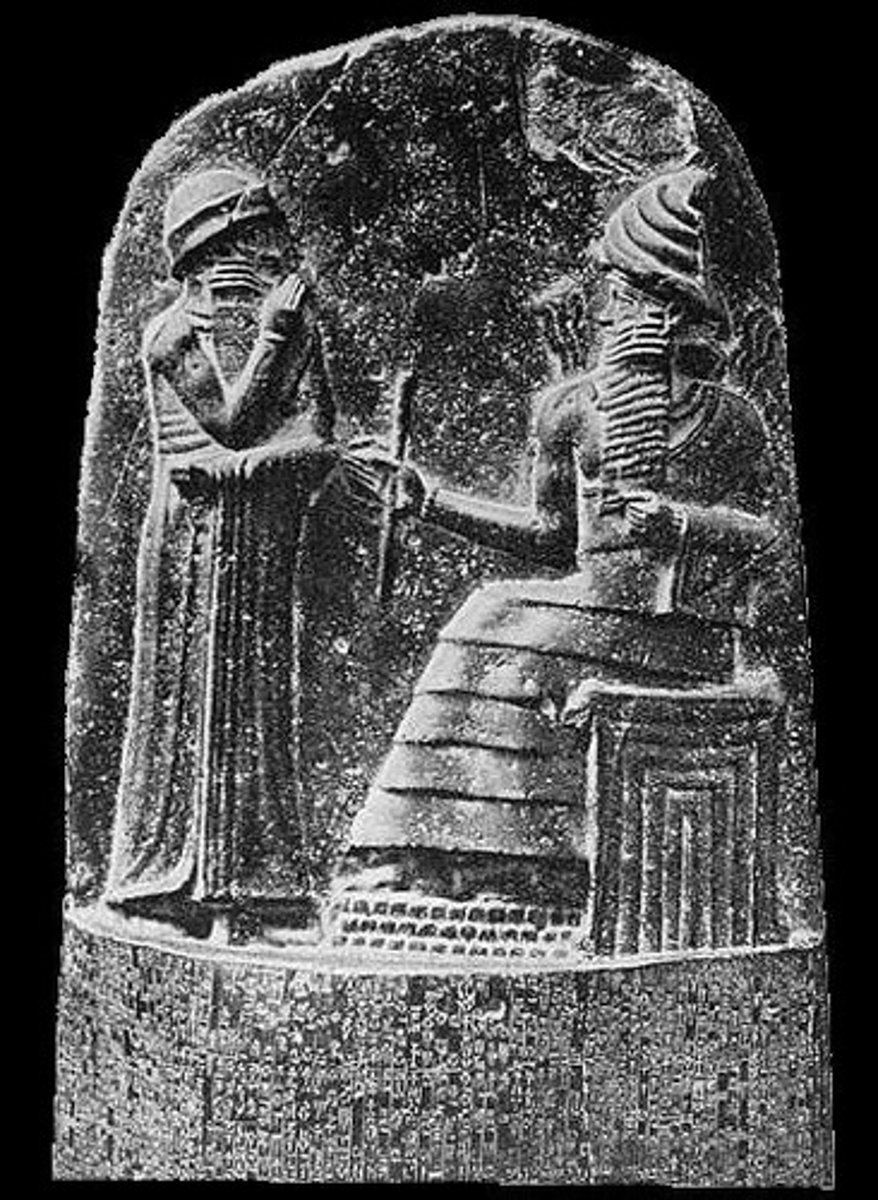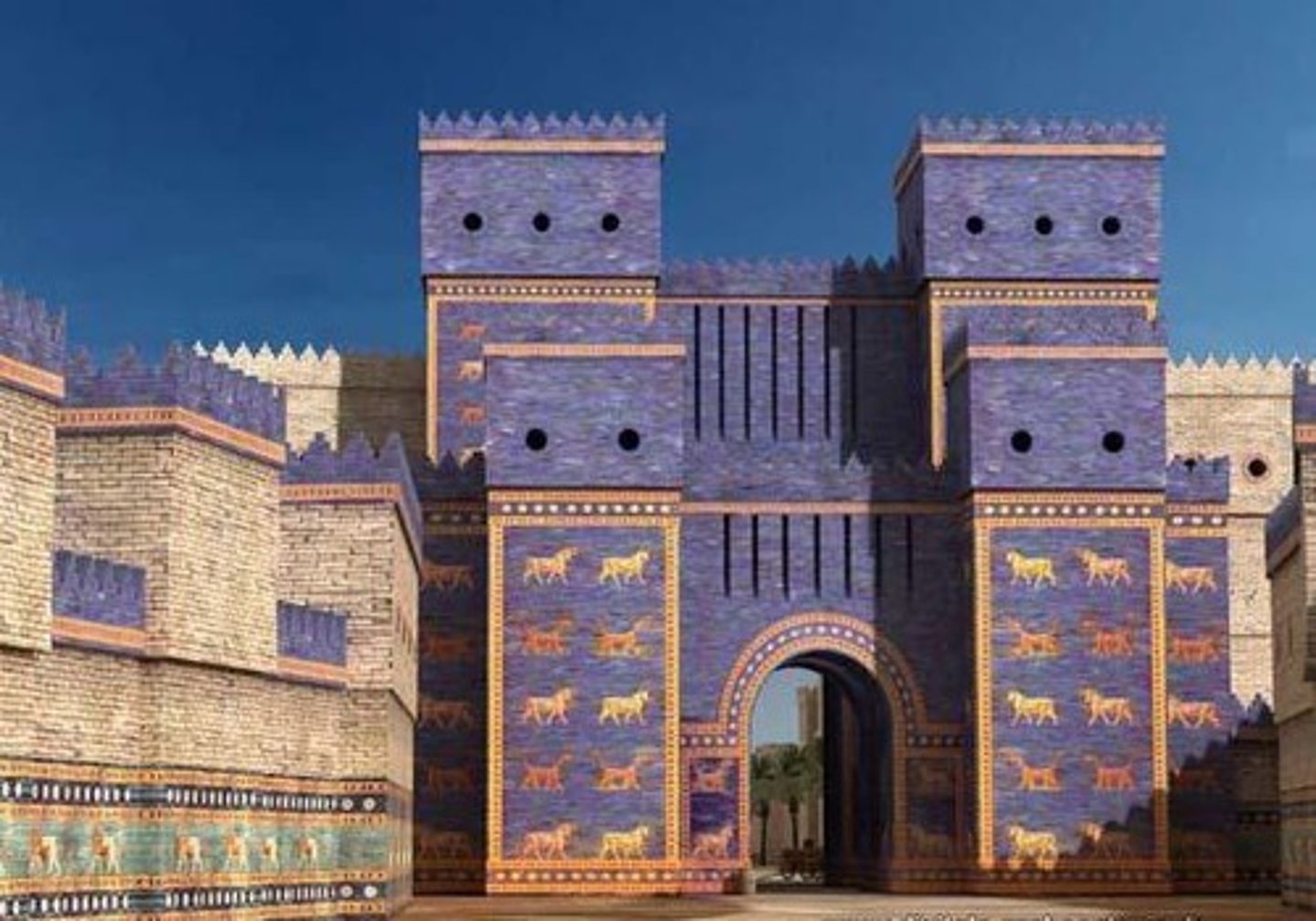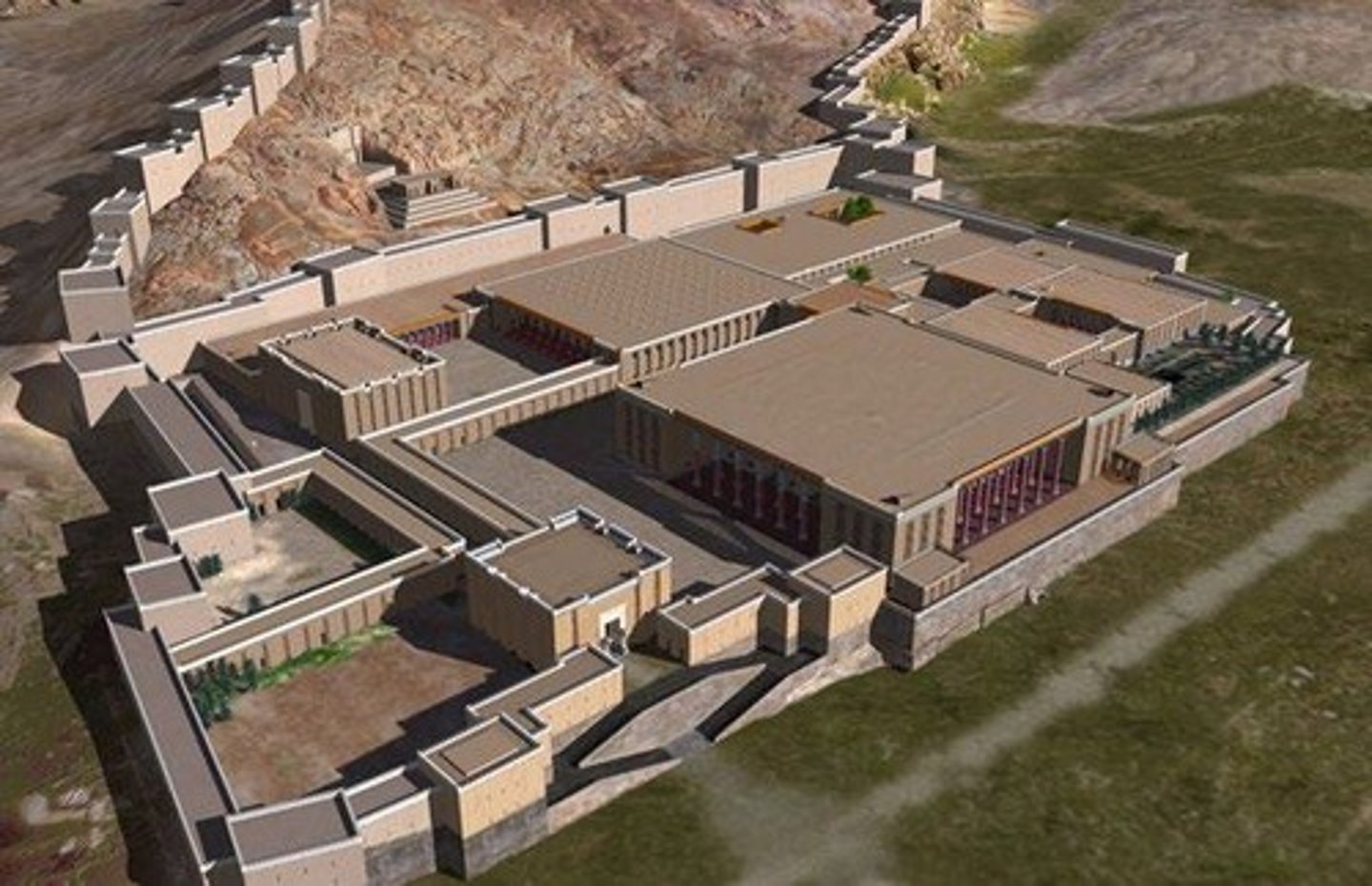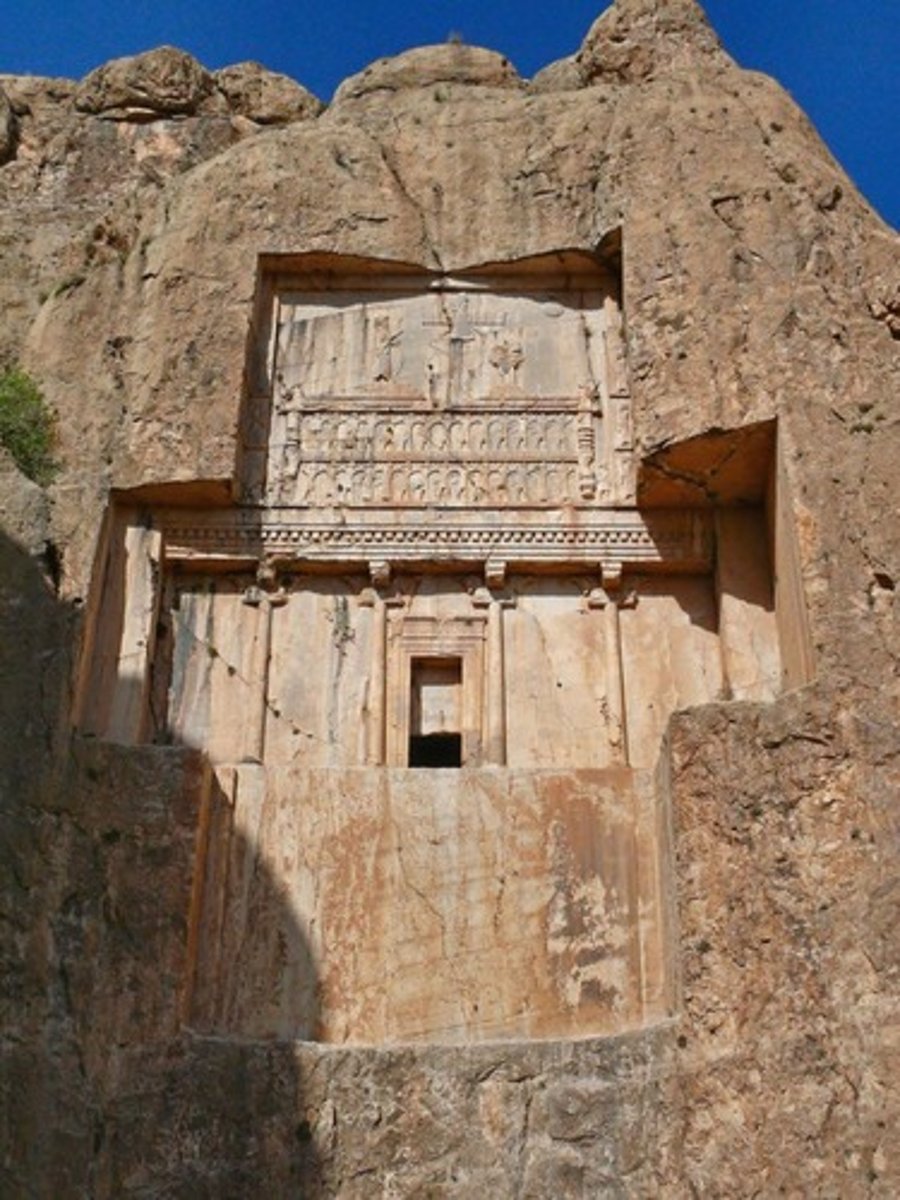Ancient World: Babylon and Persia
1/20
There's no tags or description
Looks like no tags are added yet.
Name | Mastery | Learn | Test | Matching | Spaced |
|---|
No study sessions yet.
21 Terms
Mesopotamia
Region where Babylon and Persia emerged.
Babylon
Ancient city known for its monumental architecture.
Hammurabi
King who unified Sumer into Babylon.
Code of Hammurabi
Earliest written legal code, significant architectural contribution.

Ishtar Gate
Babylonian gate dedicated to goddess Ishtar.

Nebuchadnezzar II
Babylonian king who built the Ishtar Gate.
Persian Empire
Ruled 45% of the world's population, 550-330 BCE.
Zoroastrianism
State religion of the Persian Empire.
Persian Architecture
Influenced by conquered cultures, unique architectural style.
Darius I
Persian king known for major building programs.
Persepolis
Capital of the Persian Empire, known for grandeur.

Great Palace
Reception and banquet rooms in Persepolis.
Hall of Hundred Columns
Largest roofed space in Great Palace, holds 10,000.
Naqsh-e Rustam
Site with tombs carved into solid rock.

Tomb of Darius I
Notable tomb at Naqsh-e Rustam.

Tomb of Xerxes I
Suspected burial site of Persian king Xerxes.
Glazed Brick
Material used in the construction of Ishtar Gate.
Lapis Lazuli
Precious stone used in Babylonian architecture.
Double-Headed Capital
Architectural feature in the Great Palace.
Sumerian Ziggurats
Predecessors to Babylonian monumental architecture.
Wood Columns
Structural elements with stone bases in Persepolis.